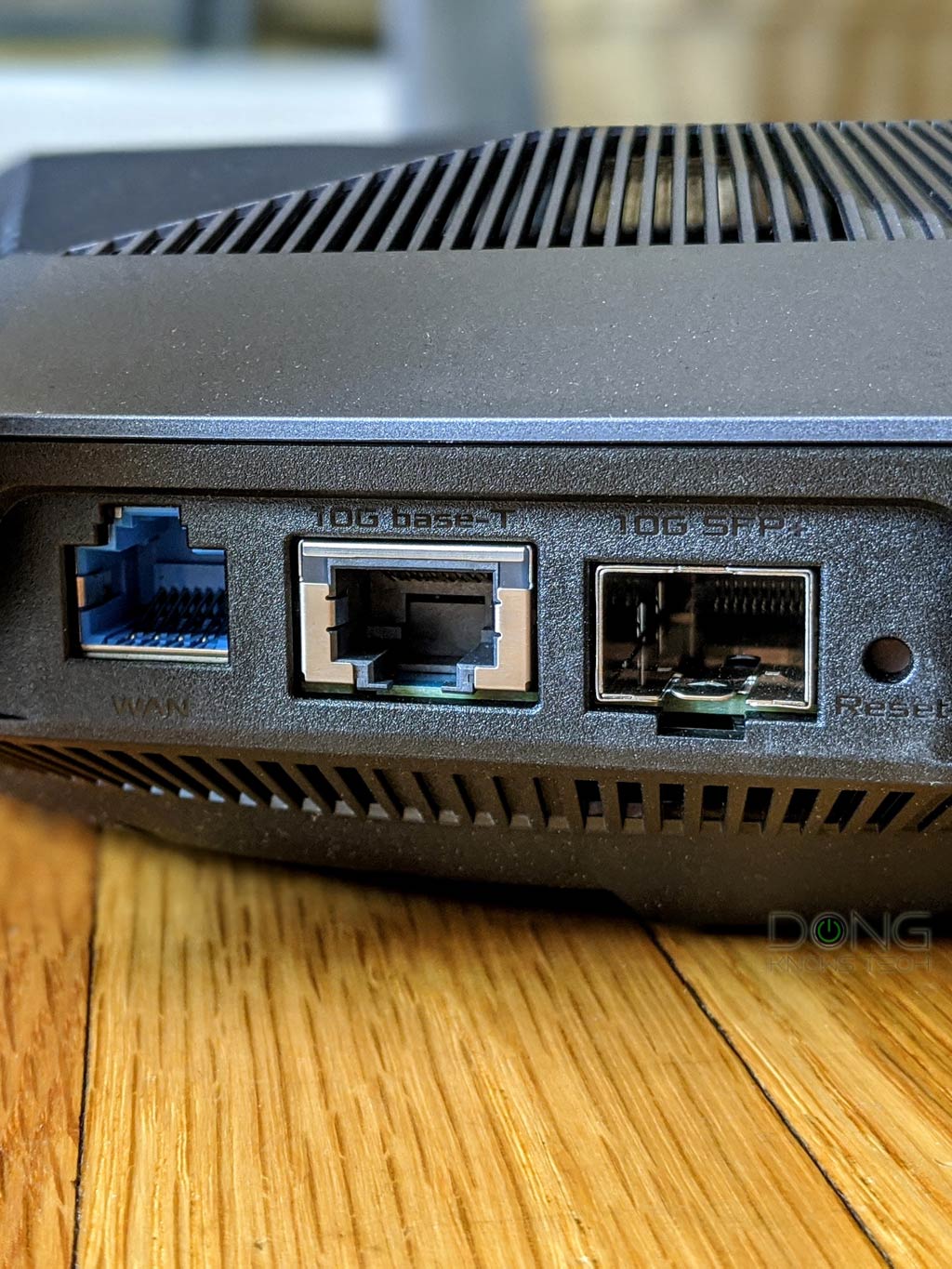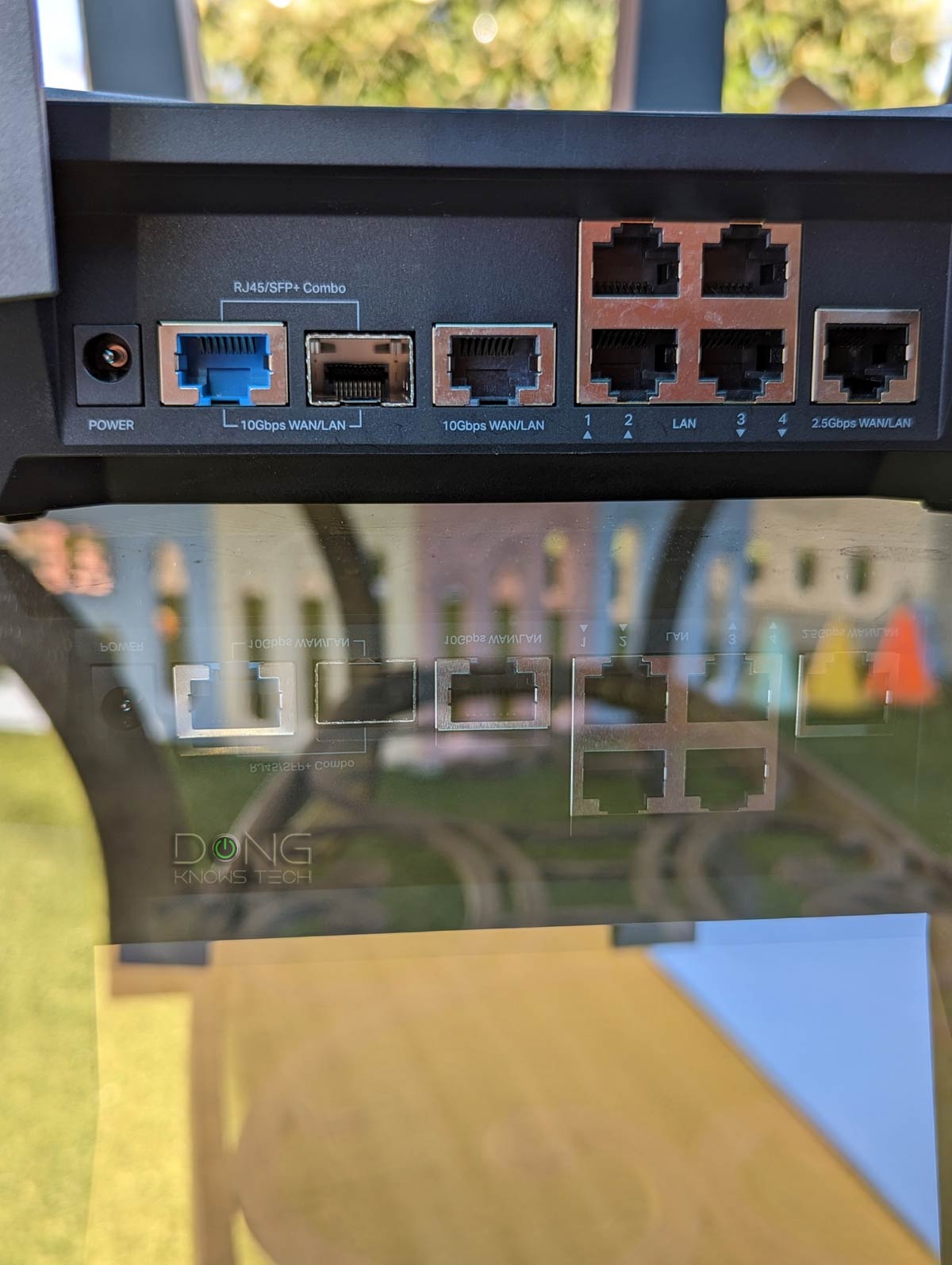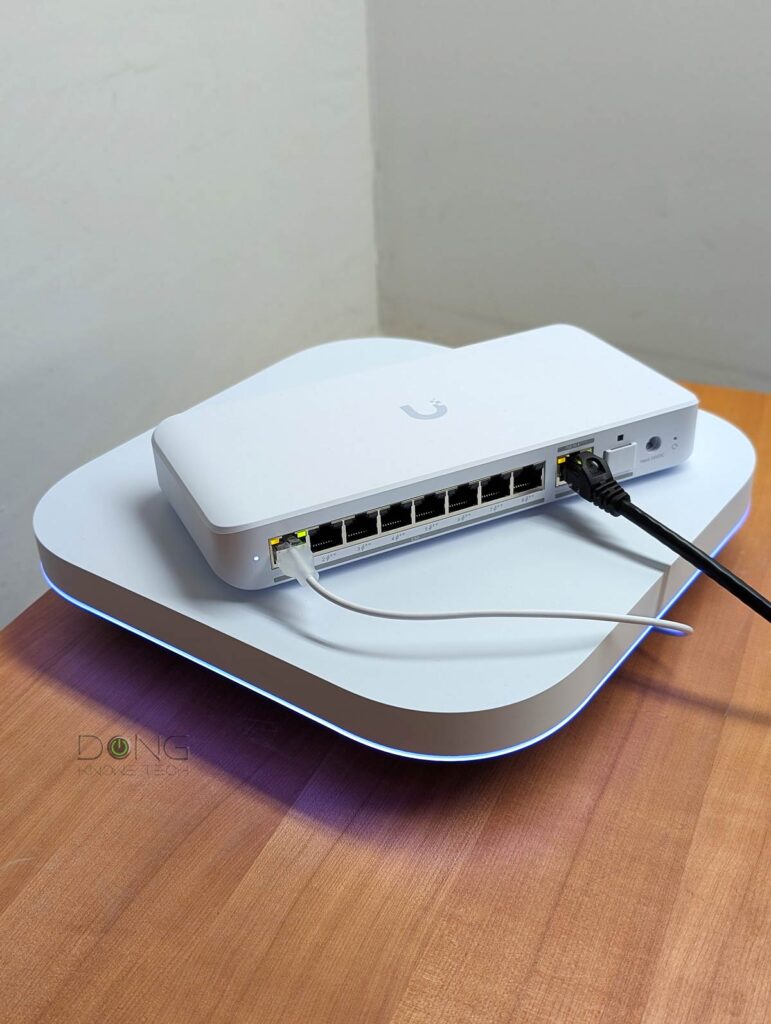The Ubiquiti 8-Port Flex 2.5G PoE switch, model USW-Flex-2.5G-8-PoE, is unlike any other switch I’ve played with, and I’ve played with many switches over the years.
At first glance, it resembles a mini version of the Enterprise 8 PoE. You sure can use it as such, but that’s when you’d realize its compact design is the least interesting aspect.
Here’s the bottom line: If you’re looking for the ultimate PoE 2.5Gbps switch—with an emphasis on the 2.5Gbps notion—at the current street price of less than $199, the Flex 2.5G PoE is an excellent investment. If you already have a UniFi console and need to expand your network, it’s almost a must-have. So, get one today!


Ubiquiti 8-Port Flex 2.5G PoE: The ultimate 2.5Gbps PoE switch
Out of the box, the USW-Flex-2.5G-8-PoE is surprisingly small, just about a quarter of the Enterprise 8 PoE, which shares the same number of ports. While the two are of different classes—Ubiquiti’s enterprise hardware has more features—for most users, they are practically the same in real-world usage.
The Flex 2.5G PoE comes with eight 2.5GBASE-T PoE++ ports and one 10Gbps BASE-T/SFP+ combo uplink port. This uplink port is where things start to get interesting. Specifically, you can use it either as a 10Gbps BASE-T or 10Gbps SFP+ and:
- If you want to use this port as the SFP+ port, you must use the switch with an external power supply, which is not included and costs $70 extra.
- As a BASE-T port, Ubiquit categorizes this port as PoE-in +++, as opposed to the PoE++ standard, which is a bit of a stretch. In reality, this port is still a PoE++ (802.3bt) port but belongs to the Type 4, meaning it can handle up to 100W of input power. You can use this port to power the switch itself via another PoE switch (or injector) and the rest of its PoE++ ports—more below.
SFP+ vs. BASE-T
BASE-T (or BaseT) is the standard port type for data communication and refers to the wiring method used inside a network cable and the connectors at its ends, which is 8-position 8-contact (8P8C).
On the other hand, the SFP or SFP+ (plus) port type is used for telecommunication and data communication, primarily in enterprise applications. SFP stands for small form-factor pluggable and is the technical name for what is often referred to as Fiber Channel or Fiber.


For data communication, an SFP+ port has speed grades of either 1Gbps or 10Gbps. The older version, SFP, can only do 1Gbps, though it shares the same port type as SFP+. This type of port standard is more strict in compatibility with better reliability and performance.
While physically different, BASE-T and SFP/+ are parts of the Ethernet family, sharing the same networking principles and Ethernet naming convention—Gigabit Ethernet (1Gbps), Multi-Gig Ethernet (2.5GBASE-T, 5GABSE-T), or 10 Gigabit Ethernet (a.k.a 10GE, 10GbE, or 10 GigE).
The BASE-T wiring is more popular thanks to its simple design and speed support flexibility. Some routers and switches have an RJ45/SFP+ combo, which includes two physical ports of each type, but you can use one at a time.
The table below shows its specs vs. the Enterprise 8 PoE.


Ubiquiti Flex 2.5G PoE vs. Enterprise 8 PoE: Hardware specifications
  |
  |
||
|---|---|---|---|
| Full Name | Ubiquiti 8-Port Flex 2.5G PoE Switch | Ubiquiti Switch Enterprise 8 PoE | |
| Model | USW-Flex-2.5G-8-PoE | USW-Enterprise-8-PoE | |
| Dimensions (W x D x H) |
8.4 x 3.9 x 1.3 in (212.9 x 99.4 x 33.5 mm) |
9.8 x 7.9 x 1.7 in (248 x 200 x 44 mm) |
|
| Weight | 20 oz (567 g) | 5.29 lbs (2.4 kg) | |
| Accessories | Wall mounting accessories | Power cord Wall mounting accessories |
|
| Gigabit Port | None | ||
| Multi-Gig Port | 8x 2.5Gbps Multi-Gig 1x SFP+/1Gbps Multi-Gig PoE+++ |
8x 2.5Gbps Multi-Gig 2x SFP+ |
|
| PoE-out Port | 8x IEEE 802.3at (PoE++) | 8x IEEE 802.3at (PoE+) | |
| PoE-in Port | 1x 10Gbps Multi-Gig PoE+++ | None | |
| Max Available PoE Power Budget (for clients) |
Via PoE+++ input: 76W Via PoE++ input: 46W Via PoE+ input: 16W Via 210W AC adapter input: 196W |
120W | |
| Max. PoE Wattage per port as a PSE (allowed by the power budget) |
PoE: 15.4W PoE+: 30W PoE++: 60W |
32W | |
| Switching Capacity | 60Gbps | 80 Gbps | |
| Touchscreen | None | 1.3″ screen with horizontal and vertical scrolling | |
| Management | Via UniFi-OS Controler | Via UniFi-OS Controler or desktop software | |
| Power Supply | External AC/DC adapter (not included), PoE++ switch or injector (not included) |
Built-in power supply supporting standard desktop power cord, Input: 100-240V~50-60Hz |
|
| Power Consumption (per 24 hours—no PoE devices) |
N/A (tested via PoE-in port) |
≈ 530 Wh | |
| US Price (at launch) |
$199 | $480 | |


A PoE Power Forwarder with a limited budget
As you noted in the table above, the Flex 2.5G PoE has the PoE Power Forwarding function. Thus, it can be used as both a PoE device (PD) and PoE power source equipment (PSE). In other words, it can function as a middle device in a PoE daisy-chain setup.
This flexibility is excellent, but it’s also where you might need to tread lightly on the power front: There’s only so much power a network cable can deliver.
Generally, it’s best to connect a PoE power forwarding device to a PSE with the highest power delivery, namely the Type 4 of the 802.3bt standard. If you use Ubiquiti’s switches, pick those with the PoE+++ designation, which has the highest power output per port—100W. That’s the maximum power the Flex 2.5G PoE can get via its PoE-in uplink port, meaning that after using about 23W-24W for itself, it now has about 76W for all of its eight PoE++ ports.


Even when you’re willing to spend extra money on the power adapter, the Flex 2.5G PoE’s total wattage budget remains at 196W for all connected PoE devices. That’s to say, there’s no way you can use all of its eight PoE++ at their highest output (60W) each.
Using PoE is always about keeping the balance of wattage between the input and the output, and it’s never a good idea to plug a PoE device into a switch without knowing its available wattage. In the case of the Flex 2.5G PoE, if you have a few PoE or PoE+ devices, chances are there’s no issue with the power when you use it with another PoE++ (or PoE+++) switch or power adapter. But the rule is don’t use more than one PoE++ device with it.
In my testing, without a power adapter, I connected the Flex 2.5G PoE’s uplink port to the Zyxel XS1930-12HP, which has a 60W output. With a 37W budget, the Flex 2.5G PoE was able to handle a UniFi E7 and a U7 Pro Max simultaneously with just a bit of breathing room.
Plug-n-play unmanaged switch by default, lots of options with an UniFi console
The Flex 2.5G PoE is plug-and-play out of the box. Connect its uplink port to the existing network, and I’ll work on it like any unmanaged switch. (Clearly, you need to power it by connecting its PoE-in unlink port to a PoE PSE device or using a power adapter.)
That’s it. Now, you can connect up to eight wired devices to its 8 2.5Gbps port. If any of those devices are PoE, the port will power them, too. That’s the idea.
The switch does not have a web user interface. You just plug it in and start using it. As long as you understand the PoE power issue mentioned above, you’ll be good to go.


To unleash the USW-Flex-2.5G-8-PoE’s full power, however, you’d want to use it with a UniFi console. In my case, I tested it with the UDM-SE, though not as its power sender—for that, I used the Zyxel XS1930-12HP. (As mentioned, you can use any PoE switch or injector; the difference is only in the PoE power budget.)
Now, the Flex 2.5G PoE has become part of the system, and you can manage it via the console’s interface. The switch has lots of port-related configurations, including link aggregation, bandwidth management, port isolation, VLAN, the ability to turn off PoE, and more. In other words, you can consider it as an extension of the UniFi console’s built-in switch.
While it’s always nice to have all these features, in most cases, you’ll just use the switch to extend the wired network and, in the case of the Flex 2.5G PoE, the Wi-Fi network by adding one or two Wi-Fi access points. On this front, the ability to forward PoE helps the switch live up to the “flex” notion in its name.


Ubiquiti Flex 2.5G PoE: Reliable with excellent Multi-Gig performance
I tested and used the Ubiquiti Flex 2.5G PoE with the UniFi E7 for about a week, and the two worked well together without any power issues.
My take is that, in real-world usage, when connected to a PoE++ (60W) power sender, this switch can easily handle two PoE+ access points or one PoE++ access point without any power issues. You can add more if you have a PoE+++ power sender or an external power adapter.
In terms of real-world rates, the Flex 2.5G PoE proved to be as fast as an entry-level Multi-Gig device can be. In my testing, it has a sustained rate as fast as a 2.5Gbps connection could be.


Pros
Eight Multi-Gig PoE++ ports with a 10G Uplink PoE+++/SFP+ combo port; reliable and fast performance
PoE Power Forwarding support; plug-n-play by default with the option to deliver more when coupled with Ubiquiti’s UniFi controller
Compact design, run calm and quiet
Cons
No power adapter or PoE injector is included, limited PoE power budget
No built-in local web user interface
Conclusion
The Ubiquiti 8-Port Flex 2.5G PoE switch (model USW-Flex-2.5G-8-PoE) lives up to its name as a flexible networking device. Additionally, it’s one of the fastest 2.5Gbps switches you can find, and the compact design never hurts.
If you’ve already had a UniFi console and now want to expand your network, this little piece of hardware will come in handy. Consider it today!







